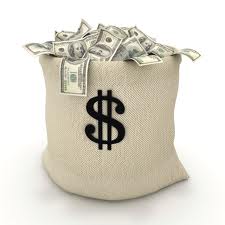The Justice Department takes a lot of flack from the business community for settling civil and criminal cases with large fines and penalties. The recent GlaxoSmithKline settlement of $3 billion underscored an important question – are fines a cost of doing business? Or do high fines deter corporate misconduct?

corruption and bribery
The answer to this question is hard to determine. Economists argue that behavior is the result of rational calculations – does the benefit of the conduct outweigh the costs of the conduct?
Consider the LIBOR scandal and Barclay’s behavior – the benefit to Barclay’s was far more than the $450 million penalty imposed. However, Barclay’s suffered reputational harm and other collateral consequences. How do you measure those “costs”?
Barclay’s is likely to suffer other enforcement actions in the United States and other jurisdictions, so the jury is still out.
In the United States, the off-label marketing enforcement program is criticized for imposing fines which are viewed by pharmaceutical and medical device companies as a cost of doing business. The marginal revenues from the illegal conduct can be in the billions of dollars. The cost of the fine or penalty does not usually exceed the marginal revenues. Again, the calculation is not so simple – the possibility of follow-on civil litigation and possible exclusion of actors by the Health and Human Services can be devastating to a business. But those threats usually just give prosecutors greater leverage in the negotiations of an appropriate fine.
It is hard to argue that the current amount of fines is sufficiently “punitive” to deter corporate misconduct given the overall size of the companies engaging in misconduct. Some argue that the answer is just to raise the amount of fines and penalties against companies to draconian levels. I guess the thinking is that if devastating fines are imposed, shareholders may rebel and throw out members of the Board and management. Unfortunately, corporate democracy does not work as quickly, or effectively, as national elections. Management can be entrenched and use a variety of techniques to preserve their positions within company structures.
It may be that corporate criminal liability is a fictional pursuit which is almost impossible to overlay appropriate incentives to deter misconduct. DPAs and NPAs are routine now for all companies engaged in criminal misconduct because of fear of collateral consequences to the company, shareholders and employees. Will criminal indictments of publicly-held companies always lead to the demise of the company? The answer in the Arthur Anderson case was yes, but will that be the result in every case?
All this leads to the policy focus on prosecution of individual actors. Policymakers argue that the best deterrent is prosecution of individuals. While that may be true as a theoretical matter, it is difficult to collect sufficient evidence to prosecute a large enough number of individuals to make a difference. Individual cases are subject to specific personal variations which may make it more difficult to prosecute an individual.
The cost of corporate misconduct has to be part of the calculus. A bribery scheme in a foreign market may “skew” the competitive result. On the other hand, price fixing in domestic markets can have a more significant impact on consumer welfare. The penalty has to bear some resemblance to the harm – the real and potential harm which may result.
It is always hard to find the right balance. Motivations and economic climates change rapidly. It is hard for regulators and enforcement agencies to keep up with the changes and decide then what the “right” punishment is for corporate misconduct.
Source : corruptioncrimecompliance






